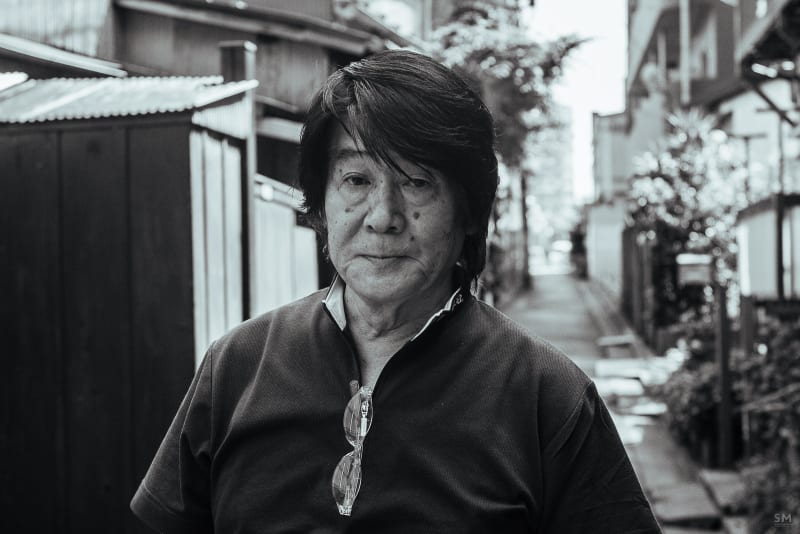Black and white tells the story of my inner world: the deepest feelings and emotions I feel every day as I walk through the streets of Tokyo or other cities, like a vagabond wandering aimlessly. Color describes what I encounter with no filters, and I like to record that as my eyes see it. The former is full of contrasts; it’s pungent and totally reflects my loner personality. The latter is polite and thoughtful of others, which is the way I present myself to the world.
- Daido Moriyama
Daido Moriyama (Japanese, b.1938) became known for his graphic black and white street photography. Moriyama’s work is best understood in the context of the deeply divided politics of the times, especially the protests surrounding the renewal of the U.S.–Japan Security Treaty in 1970, as well as the subsequent decline in political antagonism between the two countries and the rise in consumerism. For Moriyama, this was the beginning of both a highly productive period and, by the mid-1970s, a time of personal instability. In 1972 he published two important books, Hunter and Farewell Photography, and launched the small photographic magazine Record. Hunter contains some of Moriyama’s best-known pictures, printed in stark, gripping contrast. Farewell Photography is a gorgeously experimental production that continued his interest in Warhol-inspired printing; many of the pictures are blurred and highly cropped, and their subjects, from a blank television screen to a looming helicopter suspended in midair, are often almost unrecognizable. The mood is tragic and nihilistic. Appropriately, the book’s introduction is a conversation with his friend Nakahira, who would suffer a severe case of alcohol poisoning soon after.
It took some years for Moriyama to evolve out of this intensity. He began to visit the Japanese countryside, where he produced The Tales of Tono (1974, published 1976), a strange and disorienting series of pictures that reach into preindustrial rural Japan but are not escapist. That year he began to receive attention outside Japan: his work was included in New Japanese Photography, the 1974 exhibition organized by John Szarkowski and Shoji Yamagishi for the Museum of Modern Art, New York, which traveled to SFMOMA the following year. This success coincided with the recognition of photography as a particular form of artistic expression in Japan, celebrated in the exhibition Fifteen Photographers Today at the National Museum of Modern Art, Tokyo.
He has work in numerous prestigious public and private collections, including the Los Angeles County Museum of Art; the Museum of Modern Art, New York; the San Francisco Museum of Modern Art; the Metropolitan Museum of Art, New York; the Getty Museum, Los Angeles; the Museum of Fine Arts, Boston; the Tate Britain and the Centre Pompidou, Paris. Moriyama has had major solo shows at The Fondation Cartier pour l’Art Contemporain, Paris; The Fotomuseum, Winterthur, Switzerland and the Metropolitan Museum of Photography in Tokyo. In 2012, he received the Lifetime Achievement Award from the International Center of Photography, New York. Daido Moriyama currently lives and works in Tokyo.
